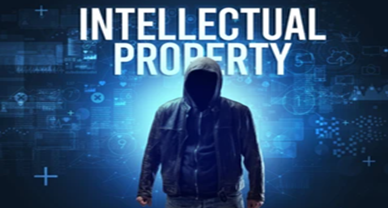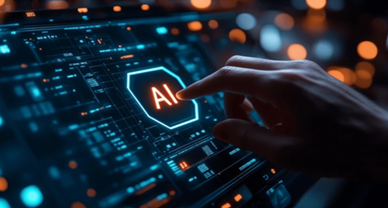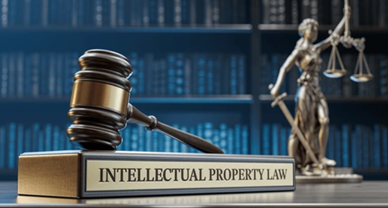Intellectual Property Rights In India: Navigating Artificial Intelligence And Traditional Knowledge Protection
Introduction
The Indian intellectual property framework faces significant challenges at the intersection of technological progress and the preservation of ancestral knowledge. The Copyright Act of 1957[1] and the Patents Act of 1970[2] provide the essential structure for intellectual property protection in India; however, these legal instruments are under intense examination as they confront innovations of the digital era and issues related to biopiracy. This discussion explores two crucial aspects of modern intellectual property law: the authorship dilemma regarding AI-generated creative works and the strategies in place to safeguard India’s traditional knowledge from unauthorized use.
The Authorship Paradox: Artificial Intelligence and Copyright Law
The key premise of copyright protection is a human author, with originality at the heart of any creative work. The Copyright Act 1957, Section 2(d), defines ‘author’ as a ‘person’ who ‘creates’ the artistic work which presents significant tension, and difficulty, in determining if the work is produced with a generative artificial intelligence system. The legal paradigm presupposes that copyright protection requires human intellectual impetus, meaning that non-human creators are generally deemed ineligible as authors.
The prevailing examples of this discussion are the artworks ‘Suryast’[3]. In this case, Ankit Sahni used the RAGHAV Artificial Intelligence Painting App to create a work of art. In November of 2020, the Indian Copyright office granted registration for the work and issued a copyright registration acknowledging joint authorship with Sahni and RAGHAV. Yet by November of 2021, the Copyright Office gave notice to Sahni to withdraw the original activity raising questions of the status of the RAGHAV AI tool as an author under Section 2(d)(iii) (an author must be a person) and Section 2(d)(vi) of the Copyright Act 1957.
The developing jurisprudence of the Delhi High Court affirms the human-centric notion of authorship. The Court reasoned in the context of AI-generated works that the Copyright Act 1957 only affords copyright protection to human authors, due to the need for intellectual creativity. The Courts stance is consistent with the precedent in Navigators Logistics Ltd v Kashif Qureshi & Ors[4] where it held that works that were compilations without human authorship and where skill and judgment was not exercised, would not attract copyright protection.
The doctrinal foundation requires considering AI as a medium to enable human creativity and as a separate creator. If the creative process contains significant human engagement, think the conceptualising, directing, or selecting judgement stages, and purposefully was incorporated into the final work copyright protection may be available. Needing to treat AI as a sole creator, if AI was used with minimal human involvement copyright law will likely not protect the final outcome.
Traditional Knowledge Protection: Defensive Mechanisms Against Biopiracy
India has an incredibly vast storehouse of traditional knowledge, specifically with respect to medicinal preparation registered in ancient texts from Ayurvedic, Unani, Siddha and other indigenous medical traditions. Biopiracy – the appropriation of indigenous knowledge for commercial purposes without benefit-sharing – represents an ongoing threat to India’s intellectual heritage[5].
The Traditional Knowledge Digital Library (TKDL) developed by the Council of Scientific and Industrial Research is India’s first systematic attempt to counter biopiracy[6]. The TKDL contains about 34 million pages of formatted information on 2.26 million medicine preparation transcribed from traditional texts in Sanskrit, Arabic, Persian, Urdu and Tamil. This database is used by patent offices around the globe to help them review patent applications.
TKDL’s effectiveness as a firewall against biopiracy can be found in the results to date. The European Patent Office has seen a 44 per cent decrease in its patent applications regarding the Indian medicinal systems since entering into access agreements with TKDL. So far, 324 patent applications have been rejected, withdrawn, or changed because TKDL evidence was used as prior art – which demonstrates TKDL’s effectiveness as a biopiracy deterrent.
The turmeric patent case[7] is a great example of the successful use of defensive protection. Two scientists from University of Mississippi Medical Centre acquired a United States patent for the wound-healing properties of turmeric in 1995. The Council of Scientific and Industrial Research obstructed the patent by providing evidence of epochal Sanskrit texts and a 1953 publication in Journal of the Indian Medical Association. The United States Patent and Trademark Office revoked the patent, holding that it was not novel.
The Patents Act 1970 has specified on the requirement of the patent applicants to disclose the source and geographical origin of biological materials. Section 3(p) specifically states that patents cannot be granted for traditional knowledge or for the use of traditional traits of known and customary properties of these materials. The statutory protections supplied in this Act also enrich the defensive purpose of TKDL.
The Treaty on Intellectual Property, Genetic Resources and Associated Traditional Knowledge[8] of WIPO 2024 marked important progress in international protection. This treaty makes the disclosure requirement that if patent applications include genetic resources or associated traditional knowledge, then the prior art has to be disclosed and considered in the patentability determination. It will improve the global landscape to prevent the misappropriation of traditional knowledge.
Pharmaceutical Patents: Balancing Innovation and Access
The pharmaceutical industry illustrates the competition between protection of intellectual property over public health concerns. Under Section 3(d) of the Patents Act 1970, it is explicitly stated that no patents shall be granted for newer forms of a known substance unless it is shown to have increased efficacy, associated with the concept of evergreening.
In the important Supreme Court decision of Novartis AG v Union of India & Ors[9], provided crucial clarity regarding the interpretation of Section 3(d). Novartis sought protection for the beta crystalline form of imatinib mesylate, which is marketed and sold under the brand name Gleevec for the treatment of chronic myeolid leukaemia. The Supreme Court ruled that ‘efficacy’ in pharmaceutical inventions must be defined as ‘therapeutic efficacy’ and that ‘therapeutic efficacy’ should be demonstrated laterally to the claimed ‘efficacy’ associated with the beta crystalline form and did not demonstrate an increase efficacy. The Court made clear that a patent applicants should establish their increased therapeutic efficacy with data from in-vivo animal studies.
An additional approach for ensuring a balance between patent protections and public health needs is compulsory licensing. Section 84 of the Patents Act of 1970 states that, once a patent is granted for a period of three years, any person who is interested in the patent may file for a compulsory licence on a number of grounds, including, the patented invention is not available to the public at a reasonably affordable price. The first compulsory licence issued in India was Bayer Corporation v Natco Pharma Ltd[10] concerning the anti-cancer drug ‘sorafenib tosylate’. In 2012, the Controller of Patents awarded Natco Pharma a compulsory licence with provisions that allowed Natco to pay Bayer a six percent royalty for the right to manufacture and sell sorafenib tosylate at costs of approximately Rs 9,000 for a monthly supply compared to Bayer’s selling price of Rs 2.8 lakh for a monthly supply.
Conclusion
In India, the current intellectual property framework faces critical dilemmas about authorship, innovation, and the ability to protect heritage. The Copyright Act 1957 adheres to an overwhelmingly human understanding of authorship, and refuses even to entertain the notion of accommodating works that are AI-generated and did not entail significant human creative effort. Even traditional knowledge protection – as embodied in the TKDL – is indicative of India’s willingness to intervene in biopiracy. The Patents Act 1970 – especially its treatment of pharmaceutical claims in Section 3(d) – is similarly predisposed to preventing patent evergreening. These vehicles of protection – copyright, TKDL, and patents – collectively demonstrate a well-considered response to intellectual property that engages with questions of societal interest (like access to medicine and protection of cultural heritage) alongside the objectives of incentivising innovation.
Author:– Manul Singh, in case of any queries please contact/write back to us atsupport@ipandlegalfilings.com or IP & Legal Filing.
[1] The Copyright Act 1957 (India)
[2] The Patents Act 1970 (India)
[3] IP Law Watch, ‘U.S. Copyright Review Board Affirms Rejection of Copyright Registration for Work Created with AI Application’ (18 December 2023) https://www.iplawwatch.com/2023/12/18/u-s-copyright-review-board-affirms-rejection-of-copyright-registration-for-work-created-with-ai-application
[4] Navigators Logistics Ltd v Kashif Qureshi & Ors (Delhi High Court)
[5] VK Gupta, ‘Protecting India’s Traditional Knowledge’ (2011) WIPO Magazine https://www.wipo.int/web/wipo-magazine/articles/protecting-indias-traditional-knowledge-37721
[6] Council of Scientific and Industrial Research, ‘Traditional Knowledge Digital Library Unit’ (CSIR, 2025)
[7]Anusree Bhowmick, Smaranika Deb Roy and Mitu De, ‘A Brief Review on the Turmeric Patent Case with Its Implications on the Documentation of Traditional Knowledge’ (2021) 1 NDC E-BIOS 83
[8] World Intellectual Property Organization, ‘Treaty on Intellectual Property, Genetic Resources and Associated Traditional Knowledge’ (WIPO, 2024)
[9] Novartis AG v Union of India & Ors Civil Appeal Nos 2706–2716 of 2013 (SC India)
[10] Bayer Corporation v Natco Pharma Ltd Order No 45/2013 (Controller of Patents)



